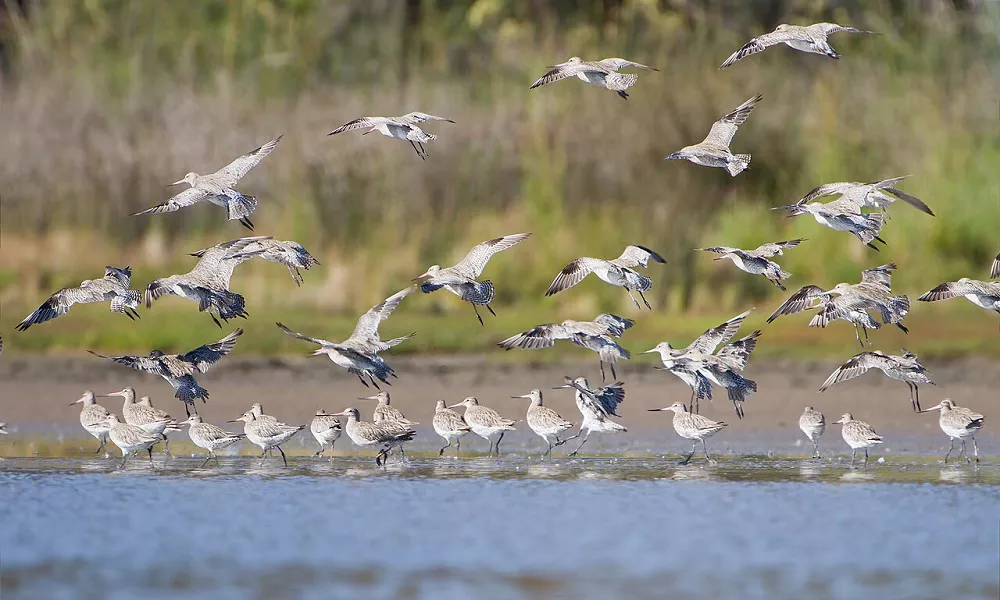A new study from the German Offshore Wind Energy Association (BWO) has found that migratory birds largely avoid wind turbines, with collision risks far lower than previously believed. The research, conducted at a near-shore wind farm in northern Germany and funded by several BWO member companies, provides new data supporting the environmentally responsible expansion of offshore wind power.
Millions of migratory birds cross the North Sea and Baltic Sea each year, including areas where offshore wind farms operate. Until now, however, the actual impact of these turbines on migrating birds has not been well understood. To address this gap, the BWO and several industry partners commissioned a study using advanced monitoring technologies to measure real-world bird behavior around turbines.
Researchers tracked more than four million bird movements over 18 months. Their findings challenge long-standing assumptions that high migration density leads to higher collision rates. According to the study, broad shutdowns of turbines during heavy migration periods may not be justified.
Key Findings
- Migratory birds actively avoid turbines: More than 99.8 percent of both daytime and nighttime migratory birds steered clear of wind turbines—significantly higher than earlier estimates.
- No link between migration volume and collision risk: Even during peak nocturnal migration, only a small number of birds entered the rotor zone.
- Breakthrough monitoring technology: The research combined radar systems with AI-powered stereo cameras to record flight paths with unprecedented accuracy. This method enabled highly reliable measurements of avoidance behavior and collision frequency.
“The new study shows that migratory birds avoid wind turbines. This confirms that offshore wind expansion can be compatible with bird protection. Our goal is to bring more objective data into the debate and support decision-making based on facts,” said BWO Managing Director Stefan Thimm.
Dr. Jorg Welcker, Head of Research and Development at Bio-Consult SH GmbH & Co. KG, added: “We used cutting-edge tools, including AI-controlled cameras and specialized bird radar, to precisely measure flight activity in the rotor area. We also conducted targeted searches for collision victims. Together, these approaches give us the most comprehensive picture to date of the real collision risk for migratory birds.”
The study was commissioned by the BWO and funded by DanTysk Sandbank, EnBW AG, Iberdrola, Ørsted, RWE, Skyborn Renewables, Vattenfall, and WindMW GmbH. BioConsult SH carried out the research and analysis.


 Facebook
Facebook  Instagram
Instagram  Youtube
Youtube 